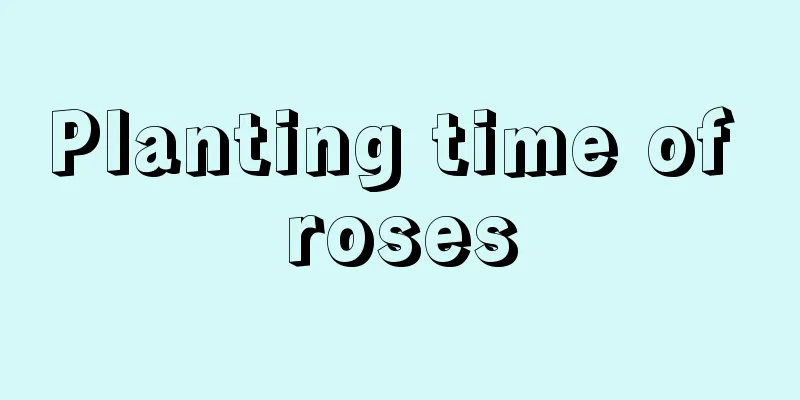Spots, yellowing and falling leaves are signs of plant health that you cannot ignore!

1. Drop leaves1. Sudden leaf fallSymptoms: Sudden leaf fall. Leaves wilt and fall off suddenly without fading, often because the plant is subjected to a sudden attack, such as a sudden rise or fall in temperature, a sharp increase in daytime sunlight intensity, or a strong cold wind. In addition, if the soil is too dry, the plant will also shed its leaves to reduce leaf transpiration. Solution: Pay attention to weather conditions such as cooling down to prevent plants from being affected by these factors. Move the plant to an environment suitable for its growth. Pay attention to the temperature, light, watering, air humidity, etc. Plants that are not in a dormant period will grow new leaves on their own after a while. Source: Bonsai Art Online) 2. New plants fall leavesSolution: It is normal for a newly purchased plant to drop 1-2 leaves when it has just been repotted, or when a plant is moved from one room to another room where the environment has slightly changed. Be sure to use a slightly larger pot when repotting. When you buy plants and bring them home, be careful to protect the plants and gradually move them from a shady place to a bright place to reduce stimulation to the plants. 3. The bottom leaves dry and fall offThere are three possible reasons, lack of light, high temperatures or lack of water. Method: Prescribe the right medicine, expose to light, water and lower the temperature. (Source: Baidu Knows) 2. Yellowing1. Water yellowSymptoms: There is no obvious change in old leaves, and young leaves turn yellow. Caused by over-watering. Solution: Water should be controlled immediately. In serious cases, remove the flowers from the pots and place them in a ventilated and cool place to dry the soil, then put them back into the pots. (Author: wulm007 Source: Gardenia Bar) 2. Phellodendron chinenseSymptoms: The leaf tips or edges become dry and withered, and the old leaves turn yellow and fall off from the bottom to the top, but the growth of new leaves is relatively normal. If the water shortage lasts for a long time, the leaves of the whole plant will turn yellow or even die. Water shortage and drought Method: Water in time, and make sure to water sufficiently and thoroughly. (Author: wulm007 Source: Gardenia Bar) 3. Fat and yellowSymptoms: Young leaves are thick, shiny, and uneven, while old leaves turn yellow and fall off. This is fertilizer yellowing, which is caused by applying fertilizer too frequently or at too high a concentration, or applying uncomposted and fermented organic fertilizer. Method: Immediately move the plant from the sun to the shade, first spray water on the plant to keep the branches and leaves from wilting; then pour plenty of water into the pot to flush the fertilizer out of the pot. If the fertilizer damage is serious, you also need to wash the roots and change the soil: (1) Gently pull the plant out of the pot (or ground) and soak the roots in clean water for 2-3 hours to thoroughly wash away the fertilizer liquid from the roots. (Author: Chaoyang Yami Source: Northern Camellia Potted Plants) (2) Cut off most of the leaves and branches. Prune more for plants that are tolerant to pruning and less for plants that are not tolerant to pruning, so as to reduce the burden of nutrient supply on the plants. If there are rotten roots, cut them off and wash the roots with potassium permanganate or carbendazim to disinfect and sterilize them. (3) Plant the plants in sterilized plain sandy soil, cover them with plastic bags to reduce water evaporation, and then place them in a shaded place for maintenance. Open the plastic bag for 1-2 hours every day to ventilate and prevent mildew. When new life appears on the branches and the buds are growing well, you can remove the plastic and return to normal management. 4. Hungry YellowSymptoms: Young leaves and tender stems turn yellow first, while old leaves are relatively normal or gradually turn from green to yellow. This is starvation yellowing, which is caused by insufficient fertilizer, low fertilizer concentration, and long intervals between fertilizations. Solution: Apply fertilizer in time when you see this phenomenon, but for flowers that are lacking fertilizer, avoid applying a large amount of concentrated fertilizer at one time to avoid burning the roots. Check the soil in the pot regularly. If it is dry, change the soil. Apply thin fertilizer frequently and add some alum water to supplement iron. (Author: Wang Defei Source: Baidu Knows) 5. Yellow leaves due to iron deficiencySymptoms: Yellow leaves of woody flowers in the greenhouse are characterized by obvious young leaves, lighter old leaves, yellow leaf flesh, green veins, and forming a typical network. Method: It can be solved by applying ferrous sulfate aqueous solution, and the solution can be made into 7 parts of cake fertilizer, 5 parts of ferrous sulfate and 200 parts of water and then watered. 6. Lack of light yellowSymptoms: When placed in a shaded environment for a long time, the leaves do not receive enough sunlight and cannot form chlorophyll, causing the entire plant to turn yellow and then fall off. Solution: Supplementary light can prevent this disease. 7. Burnt yellowSymptoms: The tips and edges of the leaves of flowers begin to dry up, and yellow spots appear on the sun-facing parts of the leaves, which is called yellowing. Strong sunlight directly shines on some shade-loving flowers (such as spider plants, hostas, etc.), which can easily cause. Solution: Move to a shady place. 3. Not growing well1. Slow growth and failure to grow upIf there is a lack of fertilizer, light, water and nutrition, you should make up for what is lacking. Applying an appropriate amount of nitrogen fertilizer will help growth. It may also be that the cultivation container is too small and it is time to change the pot. 2. Leaf color becomes lighterSymptoms: The leaves become smaller and smaller, thinner and lighter in color. Solution: The soil may not contain enough nutrients, so you need to change the pot and soil to replenish the nutrients. It can usually be placed in a sunny and ventilated place indoors to promote photosynthesis and produce nutrients for growth. (Author: eno19841017 Source: Rose Bar) 3. Leaves droop and look lifelessIf the phenomenon of leaves becoming soft due to temporary dehydration caused by exposure to the sun, move the plant indoors, water it and spray water on the leaves. If the leaves do not feel cool, but instead feel warm and dry. The plants may have already suffered from root burn and rot. The plants should be dug out to check the condition of the roots, cut off the rotten roots, disinfect them, and then replant them. If the robust leaves are filled with dust, they will also lack vitality, so be sure to clean them. 4. Burnt EdgesIf the maintenance environment is improper, the sunlight is too strong, and there is insufficient water, the leaves will lack water and some cells will shrink and dehydrate, the green color will gradually fade, and then burnt edges will appear. The burnt leaves should be cut off in time, and water should be sprayed on the leaves and the surrounding area to increase the air humidity. 5. Leaf curlingOne is that the temperature and soil temperature are low in winter, and excessive watering often causes root rot and curling. The second is too much or too little fertilizer. Excessive fertilization causes root burn, and the above-ground parts appear burnt. The third is curling caused by too high temperature (direct blowing from air conditioner, etc.) or too low temperature. Fourth, the curling caused by leaf blight can be controlled by spraying 800 times diluted 75% Benomyl. IV. Others1. SpotsIf the leaves have spots or patches that wrinkle and turn brown, it could be due to lack of water. If the spots become soft and dark brown, they may be caused by too cold watering, water splashing onto the leaves, chemical damage, sunburn, or pests and diseases. After watering, be sure to dry the leaves, water the plant at a temperature that matches the indoor temperature, and treat any diseases promptly if found. If the spots are moist and blister-like or dry and sunken, this is caused by a disease. Several insect pests can suck the leaves of plants. 2. Leaves turn greenThe leaves of variegated varieties turn green, which may be due to too little light and too much nitrogen fertilizer. Solution: Move the plant to an area with strong light, remove branches with all green leaves, and reduce the amount of nitrogen fertilizer applied. 3. Leaf tips and edges turn brownIf only the tips of the leaves turn brown, it may be caused by hot air or abrasions. The tips of the leaves may also turn brown if they are leaning against a wall or window. There are many reasons why the edges of leaves turn yellow or brown: overwatering, lack of water, insufficient light, too strong light, too high or too low temperature, excessive fertilization, low air humidity or excessive ventilation. To determine the cause, other factors and symptoms must be considered. The causes of leaf lesions may be single or multiple. To find out the cause of the disease and then provide treatment, So as not to accelerate the death of the plants. |
<<: How to accelerate the flowering of daffodils
>>: The flowers in his house can survive in minus ten degrees Celsius because he did these
Recommend
How to grow chives so that they are thick and big How to make chives grow thicker and thicker
Nutritional supply should be adequate Often, many...
How to prune red cicada flowers after they bloom
Pruning after flowering After the red cicada bloo...
Are the thorns on aloe vera poisonous? How to deal with being pricked?
1. Are the thorns on aloe vera poisonous? The tho...
How many times a year does the rose bloom
1. How many times a year does it bloom? Its alias...
The benefits of drinking honeysuckle in water for a long time, how to eat honeysuckle
1. Benefits of drinking honeysuckle soaked water ...
How to use Areca palm for flower arrangement and how to trim it
1. Flower arrangement pruning method 1. Method 1:...
Why are Monstera leaves turning yellow?
Monstera is an evergreen vine that is often used ...
Why do the leaves of Schefflera turn yellow and fall off?
Schefflera chinensis , also known as the fortune ...
How to grow lip flower
How to grow lip flower Species evolution There is...
How to make Rieger Begonia bloom on New Year's Day
1. Flowering period Generally speaking, as long a...
Why doesn't the water lily bloom at home?
The lotus does not bloom because of insufficient ...
Is eggplant a shade or sun-loving plant?
Does eggplant prefer shade or sun? Eggplant is a ...
How long does it take for carnation cuttings to take root?
1. Cutting method There are three steps to carnat...
What are the precautions for the maintenance of fuchsia in summer
Key points for summer care of fuchsia First, cool...
What to do if the cactus does not take root
1. Paper towel root inducement If you want the ca...









